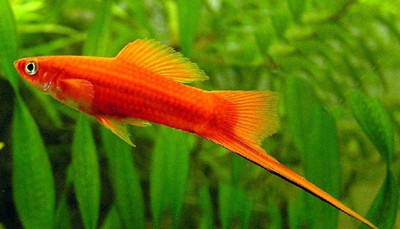Researcher Molly Cummings and her coworkers at the University of Texas at Austin placed afemale swordtail in a tank with two males visible at either end.
來自德克薩斯大學奧斯汀分校的研究員莫莉卡明斯和她的同事們做了一個有趣的實驗����。他們將一條雌性劍尾魚放入一個水槽中,并在其兩側分別放入一條雄性劍尾魚��。
One of the males, however, wassurrounded by filtering glass that blocks UV light.
但是����,不同的是,他們把其中一條雄性劍尾魚用濾光玻璃給圍起來���,而紫外線是無法穿透這種玻璃的。
They found that the female was twice as likelyto demonstrate interest in the male whose UV flashers were visible to her.
結果���,他們發現,這條雌性劍尾魚對那條紫外線可見的雄性劍尾魚的興趣是另一條的兩倍��。
Twice as likely!That's a big finding.
兩倍呀�!這可是一個不小的發現!

Put a Mexican tetra in the middle tank–that's a predator who snacks on swordtails–and youget a different result.
之后�,他們把會捕食劍尾魚的墨西哥脂鯉取代雌魚放入中間的水槽����,結果截然不同��。
The tetra shows equal interest in getting at both swordtails.
脂鯉對兩條魚表現出同等的興趣����。
Like humans,tetras are unable to register UV light.
因為它和人類一樣�����,是無法用眼睛感知紫外線的。
Interpretation?
再解釋一遍?
Male swordtails have developed a subtle way of advertising sexual readiness tofemales of their own species-while avoiding courting disaster.
簡單說來�����,就是雄性劍尾魚已經找到了一種精細的方法���,在吸引同類雌性的同時避免招致被吃的厄運�����。












